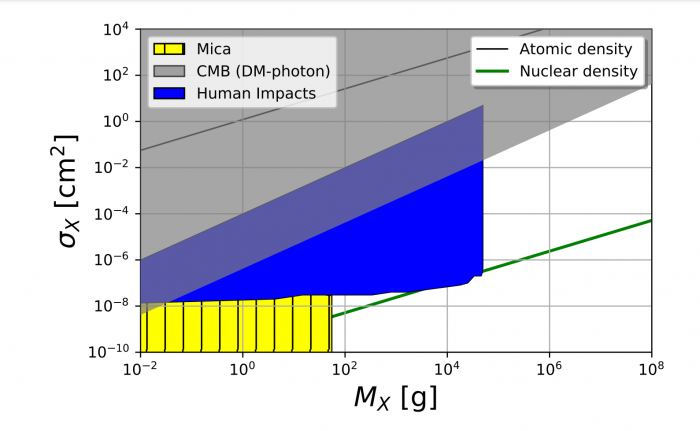What a lack of unexplained gory deaths tells us about dark matter

Astronomers have a puzzle on their hands. The universe seems to be filled with particles that exert a gravitational force but cannot be seen. So-called dark matter must exist, because without it, galaxies would simply fly apart as they rotate.
So at this instant, our solar system must be plowing through a vast sea of dark matter, and physicists are running around desperately trying to find it. But if you can’t see something, how do you spot it?
The answer is that dark matter ought to bang into visible matter from time to time. So the trick is to look for evidence of these collisions.
Exactly what this evidence will look like is the subject of considerable debate. But today we get the results of the first search for evidence that relatively large dark-matter particles, called macros, could smash into humans and kill them.
“The closest analogy to a macro collision with a human being is a gunshot wound,” say Jagjit Sidhu and colleagues at Case Western Reserve University.
That has given these guys an interesting idea. They say that humanity is a kind of dark matter detector, in the sense that any unexplained gunshot-type wounds could be evidence of dark-matter macros. Indeed, the death rate from this kind of injury would give a good sense of how common this type of dark matter must be.
First some background. Our solar system is currently orbiting the galaxy at a speed of about 250 kilometers per second. If dark matter exists, Earth must be sailing through it at a huge rate, with inevitable collisions.
If dark matter is made of tiny particles, the collisions will be minor—perhaps causing a slight increase in the temperature of a crystal, for example. Numerous experiments are currently looking for evidence of this kind of heating, so far without success.
Bigger particles—macros—would leave a very different signature. Physicists have looked for evidence of collisions with macros with a characteristic mass of a few tens of grams.

They have done this by studying a silicate mineral called mica, which has an almost perfect fine-grained structure. A macro passing through such a structure would leave a track that ought to be easily identifiable under a microscope.
Any mica deposits in Earth’s surface would have had plenty of time to collide with macros. But physicists have found no tracks and no evidence of collisions. So this rules out macros of that size.
More massive macros with a characteristic mass of up to 50 kilograms would have greater destructive power. Sidhu and co say that one analogy is with bullets fired from a .22 caliber rifle, the smallest in common use. “Bullets cause injury to the human body from a combination of permanent cavitation, temporary cavitation, and pressure waves,” they say.
However, macros are significantly different from bullets, particularly in their speed and size. They are likely to be travelling at hypersonic velocities and have a much smaller cross-section than bullets—just a few micrometers.
So macros will have a different destructive effect. “A macro impact typically heats the cylinder of tissue carved out along its path to a temperature of 107 Kelvin, resulting in an expanding cylinder of plasma inside the body,” say Sidhu and co.
The team go on to derive a formula calculating the number of impacts given the number of macro particles in our region of the galaxy and the number of humans they are able survey over a certain period.
In this study, Sidhu and co look at well-monitored populations of humans in the US, Canada, and Western Europe over the last 10 years. And their main result is that there is no evidence of macro collisions with humans.
This places an important limit on how big macros can be. “Our results constrain macros to physical sizes as small as several microns and masses less than 50 kg,” they say. And when this result is combined with the searches in mica, it rules out a significant range of macro masses and scales.
That’s interesting work that shows how otherwise innocuous data can be used to throw light on one of the great unexplained mysteries of our time. The absence of unexplained gunshot-type deaths in humans is something we should all be thankful for—cosmologists and particle physicists in particular.
Ref: arxiv.org/abs/1907.06674 : Death by Dark Matter
Deep Dive
Space
How to safely watch and photograph the total solar eclipse
The solar eclipse this Monday, April 8, will be visible to millions. Here’s how to make the most of your experience.
How scientists are using quantum squeezing to push the limits of their sensors
Fuzziness may rule the quantum realm, but it can be manipulated to our advantage.
The race to fix space-weather forecasting before next big solar storm hits
Solar activity can knock satellites off track, raising the risk of collisions. Scientists are hoping improved atmospheric models will help.
Stay connected
Get the latest updates from
MIT Technology Review
Discover special offers, top stories, upcoming events, and more.